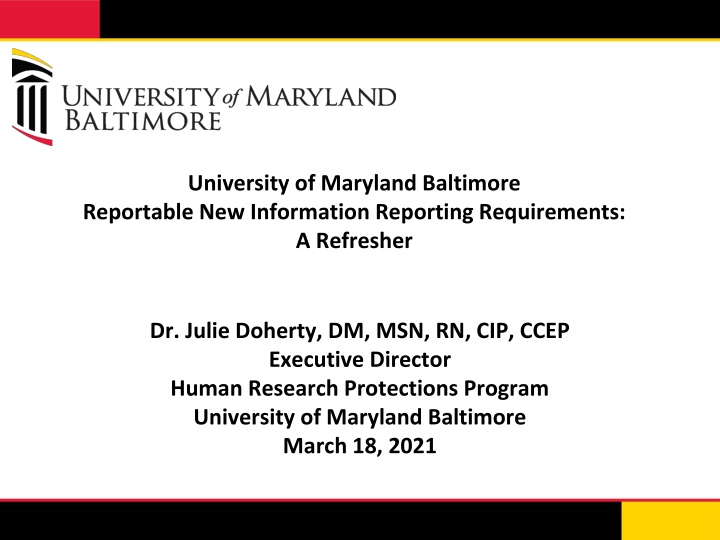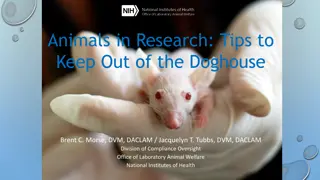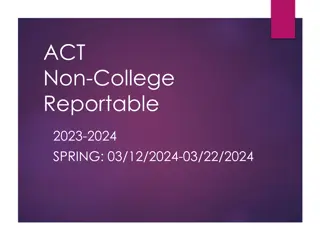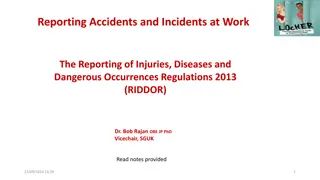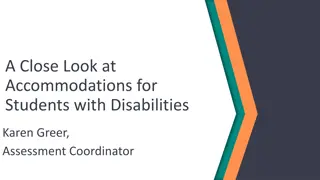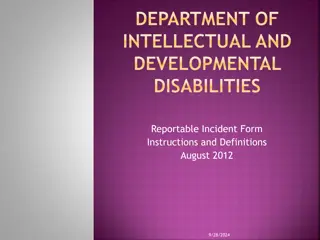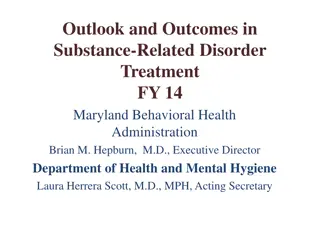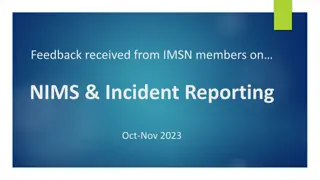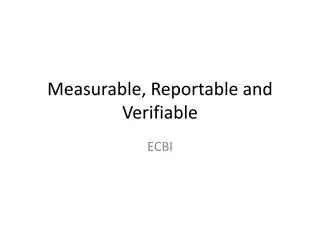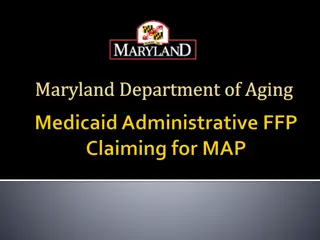Reportable New Information Reporting Requirements at University of Maryland Baltimore
University of Maryland Baltimore presents new information reporting requirements regarding research studies and IRB protocols. Learn about reportable categories, submission timelines, and potential risks that must be communicated promptly to the IRB.
Download Presentation

Please find below an Image/Link to download the presentation.
The content on the website is provided AS IS for your information and personal use only. It may not be sold, licensed, or shared on other websites without obtaining consent from the author.If you encounter any issues during the download, it is possible that the publisher has removed the file from their server.
You are allowed to download the files provided on this website for personal or commercial use, subject to the condition that they are used lawfully. All files are the property of their respective owners.
The content on the website is provided AS IS for your information and personal use only. It may not be sold, licensed, or shared on other websites without obtaining consent from the author.
E N D
Presentation Transcript
University of Maryland Baltimore Reportable New Information Reporting Requirements: A Refresher Dr. Julie Doherty, DM, MSN, RN, CIP, CCEP Executive Director Human Research Protections Program University of Maryland Baltimore March 18, 2021
Reportable New Information Any information that has not previously been known about the research study or was not previously reviewed by the IRB UMB HRP Toolkit * SOP HRP 024 Reportable New Information * HRP 105 RNI Bulletin
Reportable New Information New information that falls into one of the reportable categories must be submitted to the IRB within 5 business days of Principal Investigator/Study team becoming aware *Information may fall into more than one category
ReportableNew Information 1 Information that indicates a new or increased risk a. New information (e.g., an interim analysis, safety monitoring report, publication in the literature, sponsor report, or investigator finding) indicates an increase in the frequency or magnitude of a previously known risk, or uncovers a new risk. b. An investigator brochure, package insert, or device labeling is revised to indicate an increase in the frequency or magnitude of a previously known risk, or describes a new risk.
Reportable New Information Added New Risk: Likely: Edema face; Other (generalized edema); Localized edema; Periorbital edema Increase in Risk Attribution: Changed to Likely from Less Likely: Neutrophil count decreased External SUSARs only if impact local study or occurred locally
Reportable New Information 1 c. Withdrawal, restriction, or modification of a marketed approval of a drug, device, or biologic used in a research protocol. d. Protocol violation that harmed subjects or others or that indicates subjects or others might be at increased risk of harm.
Reportable New Information 1 e. Complaint of a subject that indicates subjects or others might be at increased risk of harm or at risk of a new harm. f. Any changes significantly affecting the conduct of the research.
Reportable New Information 2 Any harm experienced by a participant or other individual which in the opinion of the local investigator is - unexpected AND - at least probably related to the research
Reportable New Information 2 A harm is unexpected when its specificity or severity are inconsistent with risk information previously reviewed and approved by the IRB in terms of nature, severity, frequency, and characteristics of the study population. A harm is a least probably related to the Human Research procedures if in the opinion of the local investigator, the research procedures more likely than not caused the harm (greater than 50% probability).
Reportable New Information 3 Non-compliance with the federal regulations or with the requirements or determinations of the IRB * Protocol expiration * Research activities occurred in interim? * CAP to prevent in future---submit 6 weeks in advance * Non-adherence with the IRB approved protocol * Over-enrollment
Reportable New Information 4 Failure to follow the protocol due to the actio or inaction of the investigator or research staff *Non-adherence with the IRB approved protocol
Reportable New Information 5 Breach of confidentiality Database related to this study sent by email to study group with identifying data that was not encrypted. Stolen laptops/tablets not encrypted
Reportable New Information 6 Change to the protocol taken without prior IRB review to eliminate an apparent immediate hazard to a subject Dosing change not in IRB approved protocol Additional study procedures
Reportable New Information 7 Incarceration of a subject in a study not approved by the IRB to involve prisoners Enrolled participant shows up for study visit with ankle monitor on PI learns participant on study drug is in jail
Reportable New Information 8 Complaint of a subject that cannot be resolved by the research team *Communication and documentation
Reportable New Information 9 Suspension or premature termination of the research by the sponsor or the investigator * Locally * Globally
Reportable New Information 10 Unanticipated adverse device effect Any serious adverse effect on health or safety or any life threatening problem or death caused by, or associated with, a device, if that effect, problem, or death was not previously identified in nature, severity, or degree of incidence in the investigational plan or application (including a supplementary plan or application), or any other unanticipated serious problem associated with a device that relates to the rights, safety, or welfare of subjects).
Reportable New Information 11 Audit, inspection, or inquiry by a federal Agency *FDA *DoD *OHRP *ORO
Reportable New Information 12 Written reports of study monitors
Reportable New Information 13 For Veterans Administration (VA) research only: any local SAE that is serious, unanticipated and related to the research any serious problem that is both unanticipated and related to theresearch any apparent serious or continuing noncompliance with IRB or other human research protection requirements
Reportable New Information 13 Serious problem is a problem in human research or research information security that may reasonably be regarded as: (1) Presenting a genuine risk of substantive harm, to the safety, rights, or welfare of human research subjects, research personnel, or others, including their rights to privacy and confidentiality of identifiable private information; or (2) Substantively compromising a facility s HRPP [Human Research Protection Program] or research information security program.
Reportable New Information 14 Determination from external IRB of Record of: *noncompliance *continuing non-compliance *serious non-compliance *unanticipated problem involving risk to research subjects or others *suspension or termination of research at UMB
Reportable New Information 15 RNI submission for OAC, HRPO & VA R&D Use only Audit reports Paper agenda items
Reportable New Information 16 Research Resumption Plan during COVID-19 pandemic * Submitted and approved prior to resuming research activities * Must be appropriate to currently approved Stage for research The decision to move to Stage 2 of the Human Subjects Research Resumption Plan was announced August 25th, 2020 and remains in place.
Reportable New Information 16 Checklist for Resuming Clinical Research Campus Operations Proposal Assessment Questions for COVID-19 Recovery Task Force Teams
Reportable New Information Processes Submit documentation within 5 days of receipt from external IRB. Include corrective action plan. HRPO will review and query PI as needed for clarity. UMB IRB does not have oversight but institution does (University of Maryland Baltimore)
Reportable New Information Processes All other information that does not fall under any of the previous categories is not required to be reported to the IRB
CICERO Process Select activity button Create New InformationReport Categorization 1. What are you reporting to the IRB? - Check the appropriate category (or more than one as appropriate)
CICERO Process - 2 Description 1. Describe the problem/information being reported to theIRB type or nature of the problem/information as appropriate, date problemoccurred as appropriate, a full description of the activities leading to theproblem as appropriate, interventions/actions taken in response as appropriate, temporal relationship to study activities as appropriate, current status of participant or person affected by the problem
CICERO Process - 3 Description,cont. 2. Date the PI or study staff became aware of this information 3. Participant signed a VA consent? 4. Attach any pertinent documents
CICERO Process - 4 Investigator Analysis 1. Does information indicate new or increased risk? 2. Does protocol require revision? If yes, describe and submit a modification 3. Does the consent require revision? If yes, describe and submit a modification
PI Reporting Requirements New information that falls into one or more reportable category must be reported to the IRB within 5 business days of the PI/study team becoming aware Applies to any type of study regardless of funding (pharmaceutical sponsor for drug or device study; or investigator initiated)
PI Responsibilities Monitor research activities for events that may indicate new information Determine if new information falls into a reportable category Make a determination about new or increased risk Make a determination about protocol and/or consent revisions (modifications)
PI Responsibilities * External IRB determination----submit to UMB through RNI pathway in CICERO * Institution in consultation with IRB can take action based on report
IRB Action If submission indicates that the information does not increase risk to participants, IRB will acknowledge information If submission indicates that the information does increase risk to participants, the IRB will review and determine if additional action is required
IRB Action Full board review Protect rights, safety and welfare of participants and others involved in research Management plan appropriate (including re- consent; affect participants willingness to continue participation) Corrective action plan appropriate
IRB Action Unanticipated Problem Involving Risks to Subjects or Others Any information that is (1) unanticipated and (2)related to the research , and (3) indicates that subjects or others are at increased risk of harm.
IRB ACTION Non-Compliance: Failure to follow the regulations, or the requirements or determinations of the IRB. Serious Non-Compliance: Non-Compliance that adversely affects the rights or welfare of subjects. Continuing Non-Compliance: A pattern of Non- Compliance that indicates a deficiency likely to result in further Non-Compliance or a circumstance in which an investigator fails to cooperate with investigating or correcting Non-Compliance.
IRB ACTION Communication with PI on rights, safety and welfare of research participants IRB Determination of RNI Follow-up with PI and team on CAP or management plan as needed
HRPO ContactInformation Dr. Julie Doherty Executive Director, HRPP jdoherty@umaryland.edu Mary MacFadden - Director Research Subject Advocate & Safety Specialist mmacfadden@umaryland.edu Human Research ProtectionsOffice 410-706-5037(phone) 620 West Lexington Street, 2nd Floor Baltimore, MD21201 Website: www.hrpo.umaryland.edu Email:hrpo@umaryland.edu
Questions?? THANK YOU!!!
